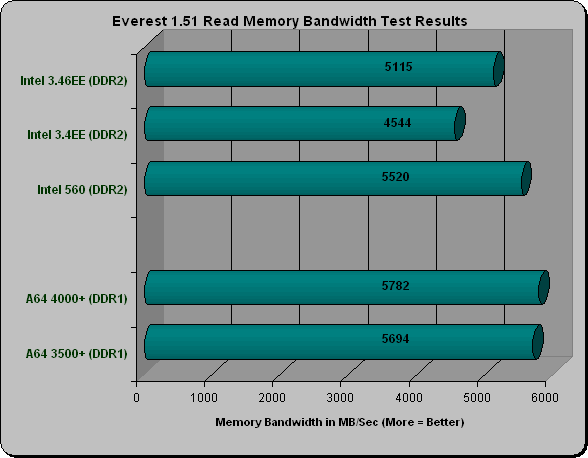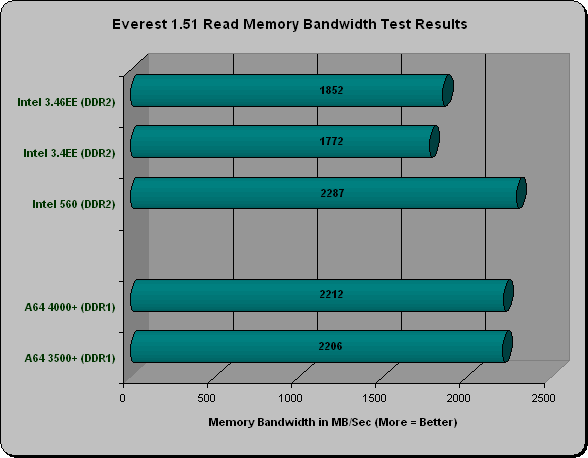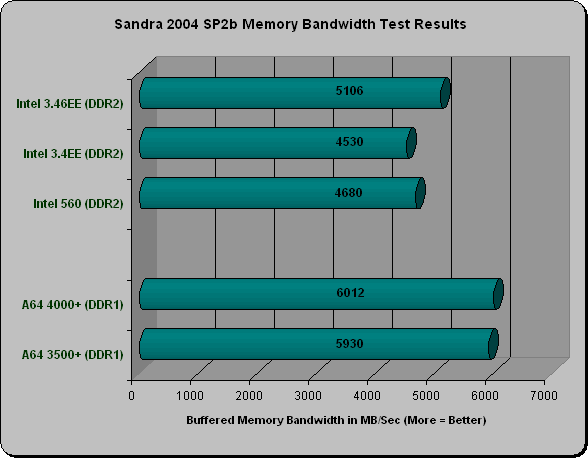Intel’s 925XE Chipset & 1066FSB Processors Arrive
Test Setup & Benchmarking
Individual Test Systems:
- AMD Athlon 64 4000+, 3500+ — ASUS A8V (VIA K8T800 Pro w/ Hyperion Drivers), 1GB (2x512MB) Kingston PC3500 HyperX @ DDR400 (2-3-2-5), ATI X800 XT 256mb (Catalyst 4.9), 120GB Seagate SATA150 HDD, Windows XP w/SP1 and DX9B.
- Intel P4 560, 3.4EE, 3.46EE — Intel D925XECV2 (Intel 925XE), 1GB (2x512MB) Crucial PC4200 @ DDR2 533 (4-4-4-12), ATI X800 XT 256mb (Catalyst 4.9), 120GB Seagate SATA150 HDD, Windows XP w/SP1 and DX9B.
Testing Procedure:
All testing was done on a fresh install of Windows XP Professional build 2600 with Service Pack 1A and DirectX 9.0b. All benchmarks were completed on the desktop with no other software programs running. No overclocking was done on the video card during any of this review. We did disable the Firewire, and LAN features if found in the BIOS menu for all the testing completed during this review.
Memory Bandwidth Testing:
Everest 1.51:
Everest 1.51 is a professional system information, diagnostics and benchmarking program for Win32 platforms. It extracts details of all components of the PC. It also tests the actual read and write speeds of your memory to give a fairly accurate look of true memory performance.
Read Scores:

Write Scores:

Sisoft; Sandra 2004:
Sisoft Sandra 2004 is designed to test the theoretical power of a complete system and individual components. The numbers taken though are, again, purely theoretical and may not represent real world performance. Higher numbers represent better performance in memory bandwidth.

Results: It’s fairly obvious that the 533MHz DDR2 memory found on our Intel test systems running at 3-3-3-8 improved with the new 1066FSB. It is also pretty obvious that the Athlon 64 with low latency DDR1 memory is not having any problems competing against DDR2 memory.

Comments are closed.